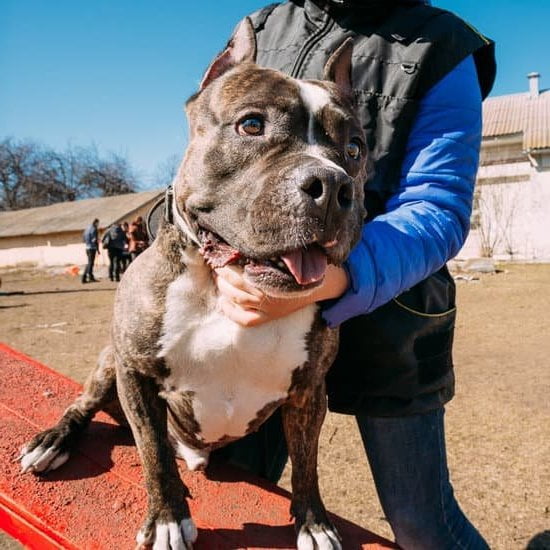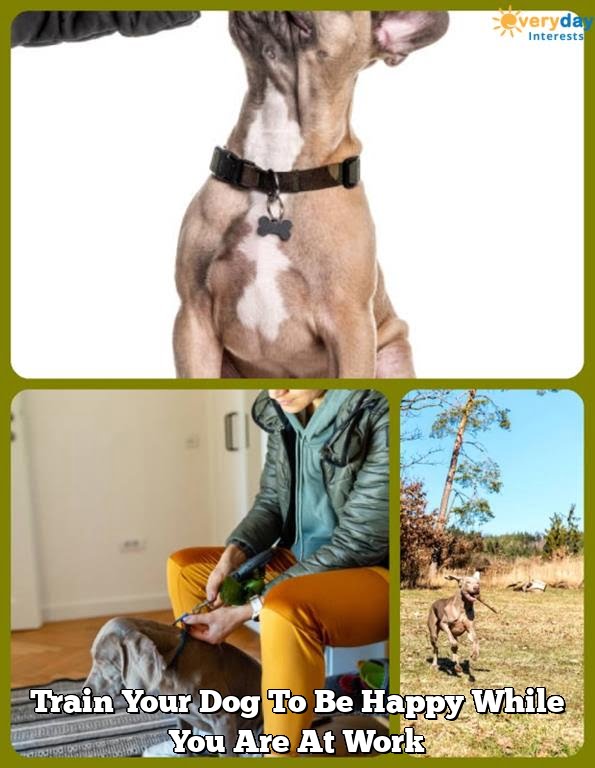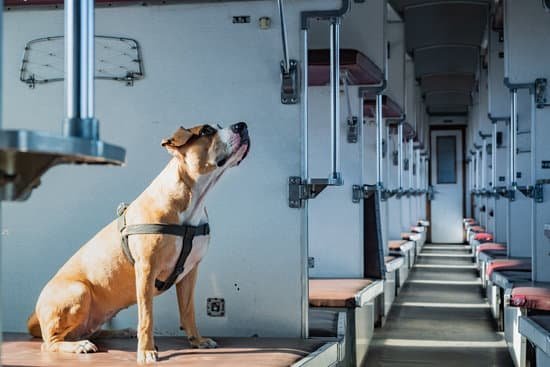Are you wondering how to train your dog for service work? Service dogs play a crucial role in the lives of individuals with disabilities, providing them with assistance and support in their daily activities. From guiding the visually impaired to alerting those with hearing impairments, these specially trained canines make a significant impact on the lives of their handlers.
Service dogs are not just pets; they are highly skilled and dedicated companions who undergo extensive training to perform specific tasks that assist their handlers in various ways. In this article, we will explore the essential qualities and traits of a good service dog, how to select the right dog for service work, basic and advanced training techniques, as well as legal and ethical considerations for service dogs.
Whether you are considering training a service dog for yourself or someone else, understanding the importance of these incredible animals is the first step towards making a difference in someone’s life. Join us as we delve into the world of service dogs and learn how to train these amazing creatures to provide invaluable support and independence to individuals with disabilities.
The Qualities and Traits of a Good Service Dog
Temperament and Personality
When considering how to train your dog for service work, it’s important to start with the right foundation. A good service dog should possess specific qualities and traits that make them well-suited for the job. These include a calm and patient temperament, an eagerness to please, and the ability to remain focused and attentive in different environments. Additionally, they should exhibit confidence without being overly aggressive or fearful.
Intelligence and Trainability
Another key quality of a good service dog is their intelligence and trainability. They should be quick learners, able to understand and execute commands reliably, and adaptable to different training techniques. This will make it easier to teach them the specific tasks required for their handler’s individual needs. Additionally, an intelligent service dog can problem solve and make decisions independently when necessary.
Physical Attributes
While not as crucial as temperament and trainability, certain physical attributes can make a dog better suited for service work. These include good overall health, stamina, agility, and an appropriate size for the tasks they will perform.
For example, a larger breed may be more suitable for mobility assistance tasks, while a smaller breed may be better for tasks that involve reaching or retrieving objects from tight spaces. It’s important to consider how the dog’s physical attributes align with the specific needs of their potential handler before beginning training.
Getting Started
When it comes to training a dog for service work, the first step is to select the right dog for the job. Not all dogs are suited for service work, as it requires a specific set of qualities and traits. One of the most important factors to consider when selecting a dog for service work is their temperament.
Service dogs need to be calm, obedient, and able to remain focused in various environments. They should also be friendly and social, as they will often be interacting with different people.
Another important quality in a good service dog is their intelligence and willingness to learn. Dogs that are quick learners and eager to please are ideal candidates for service work. Additionally, physical characteristics such as size, strength, and stamina should also be taken into consideration depending on the specific type of service work the dog will be trained for.
It’s crucial to remember that not every breed is suitable for service work, so it’s important to research and consult with professionals when selecting a dog for this purpose. Some common breeds used for service work include Labrador Retrievers, Golden Retrievers, and German Shepherds. However, mixed breed dogs can also excel in service work if they possess the necessary qualities and traits.
Basic Training Techniques
Importance of Basic Training
Before diving into teaching specific service tasks, it is crucial to ensure that your dog has a solid foundation in basic obedience training. A service dog must be well-behaved and responsive to commands in various environments. Basic training not only lays the groundwork for advanced skills but also fosters the bond between you and your dog.
How to Train Your Dog for Service Work
To train your dog for service work, start with simple commands such as sit, stay, come, and heel. Begin in a quiet, distraction-free environment and use positive reinforcement techniques like treats or praise to encourage the desired behavior. Consistency is key – practice these commands daily until your dog responds reliably.
Seeking Professional Guidance
If you are new to dog training or have a particularly challenging dog, consider seeking help from professional trainers who specialize in service dog training. They can provide guidance on tailored techniques and offer support throughout the training process. Remember, every dog is unique, so what works for one may not work for another. Professional assistance can make a significant difference in your dog’s progress.
Advanced Training
When it comes to training your dog for service work, the advanced training phase is crucial in preparing them to perform specific tasks that will assist individuals with disabilities. Service dogs are trained to perform a wide range of tasks depending on the needs of their handlers, such as retrieving items, opening doors, providing balance support, or even alerting to medical issues.
In this section, we will explore the fundamental principles and techniques for teaching these specific service tasks to your dog.
One of the key aspects of advanced training is identifying the unique needs of the individual who will be assisted by the service dog. Understanding these needs will help in determining which specific tasks the dog should be trained to perform.
For example, if the handler has mobility limitations, the dog may need to learn how to brace or provide stability when walking. Conversely, if the handler is visually impaired, the dog may need to master guiding and obstacle avoidance techniques.
Once the specific tasks have been identified, it’s important to break down each task into small, achievable steps for your dog. Using positive reinforcement and reward-based training methods can help your dog learn and master these tasks effectively. Consistency and patience are also key during this phase of training, as it may take time for your dog to fully understand and become proficient in performing each specific service task.
| Training Phase | Key Considerations |
|---|---|
| Identifying Specific Tasks | Understand individual needs |
| Breaking Down Tasks | Use positive reinforcement methods |
| Consistency and Patience | Be patient with your dog’s progress |
By following these fundamental principles and techniques for teaching specific service tasks during advanced training, you can effectively prepare your dog to become a reliable and capable service companion for individuals with disabilities. Remember that every dog learns at their own pace, so be sure to customize the training process based on your dog’s abilities and progress.
With dedication and commitment, you can help make a positive impact on someone’s life by training a service dog that meets their unique needs.
Socialization and Public Access Training
Having a well-socialized service dog is crucial for their success in public spaces. Socialization helps them to remain calm and focused in various environments and around different people. Here are some important tips on how to train your dog for service work:
1. Expose your dog to different environments: Take your service dog in training to various places such as parks, restaurants, shops, and public transportation. This will help them get used to different sights, sounds, and smells.
2. Positive reinforcement: Use treats and praise to reward your dog for good behavior in public settings. This will encourage them to remain calm and well-behaved when out and about.
3. Practice obedience commands: Make sure your service dog is well-versed in obedience commands such as sit, stay, come, and heel, even in busy and distracting environments.
Remember that socialization is an ongoing process, so continue to expose your service dog to new situations regularly. Proper socialization and public access training will ensure that your dog is well-prepared to assist you effectively in a variety of real-world situations.
Maintaining a well-socialized service dog not only benefits the individual handler but also contributes to the positive perception of service dogs in general by promoting good behavior and responsible ownership. With consistent training and exposure, your service dog can become a valuable asset in helping you lead a more independent life.
Legal and Ethical Considerations for Service Dogs
Service dogs play a crucial role in assisting individuals with disabilities, but it’s essential to understand the legal and ethical considerations that come with training and utilizing these specially trained animals. Service dogs are not considered pets under the law; they are working animals that are granted specific legal protections. It is important to be aware of these laws and regulations when training a service dog for public access and work.
The Americans with Disabilities Act (ADA) defines a service animal as a dog that is individually trained to do work or perform tasks for a person with a disability, including physical, sensory, psychiatric, intellectual, or other mental disabilities. This definition encompasses not only guide dogs for individuals who are blind but also hearing alert dogs for individuals who are deaf or have hearing loss, as well as psychiatric service dogs for individuals with mental health conditions such as PTSD.
It is critical to be familiar with the rights of handlers and the responsibilities of businesses and entities that serve the public when training service dogs. Understanding these legal considerations ensures that both the handler and the service dog will be able to navigate public spaces with confidence. It also helps to protect the rights of individuals with disabilities who rely on their service animals for assistance in their daily lives.
| Legal Considerations | Ethical Considerations |
|---|---|
| Understanding ADA requirements | Maintaining the well-being of the service dog |
| Rights and responsibilities of handlers and businesses | Avoiding misrepresentation of pets as service animals |
| Ensuring public access for service dogs | Respecting the comfort and safety of others in public spaces |
The Bond Between Handler and Service Dog
Building a strong bond between a handler and their service dog is crucial for the success of service work. The partnership between a handler and their canine companion is built on trust, mutual respect, and understanding. Here are some key ways to strengthen the bond between a handler and their service dog:
- Spend quality time together: Engaging in activities that both the handler and the dog enjoy can help foster a deeper connection. Whether it’s going for walks, playing games, or simply relaxing together, bonding moments can solidify the relationship.
- Positive reinforcement training: Using positive reinforcement techniques such as praise, treats, and toys can create a positive association between the handler and the dog. This will not only enhance obedience but also build confidence and trust in each other.
- Communication: Understanding your dog’s body language, cues, and signals is essential for effective communication. Likewise, being consistent with commands and maintaining clear expectations will help strengthen the bond.
By prioritizing the bond between handler and service dog, individuals can ensure a successful partnership that positively impacts the lives of people with disabilities.
Regular bonding activities such as grooming, feeding, and playtime help reinforce the special relationship between handlers and their service dogs. An environment of love, trust, patience, understanding beneath well-defined training protocols guarantees enhancing effectiveness in these animals’ performance as useful aides to their owners.
Making time for play every day outside of structured training helps maintain enjoyment for both partakers. This makes tasks feel more than a job easily bringing mental joy to fulfillment of obligations easing situations when assistance might be needed at awkward times.Identifying types of rewards from favourite games,treats most successful used during community outings helps make tasks feel like play Renderig this difficult work enjoyable.
Focusing on improving relationships through respecting limitations regarding sensory overload while eventually providing cozy environment prior new experiences ensures these partnerships shall continue providing wonderful outcomes.
Maintaining and Enhancing Service Dog Skills
Once a dog has completed its initial training for service work, it is essential to continue providing ongoing training and support to maintain and enhance its skills. This ongoing training is crucial for ensuring that the service dog remains capable of performing the specific tasks it has been trained for, as well as maintaining good behavior in various environments.
One important aspect of ongoing training for service dogs is to regularly practice and reinforce the tasks they have learned. This can include daily or weekly practice sessions to ensure that the dog does not forget how to perform important tasks. Additionally, exposing the service dog to different environments and situations on a regular basis can help reinforce their training and improve their abilities to handle various real-life scenarios.
In addition to regular training sessions, providing ongoing support for service dogs is also critical. This includes ensuring that they receive regular veterinary care, maintaining their physical health with proper exercise and diet, as well as monitoring their mental well-being and providing appropriate socialization opportunities.
This comprehensive approach to ongoing training and support can contribute significantly to a service dog’s long-term success in assisting individuals with disabilities. Overall, understanding how to train your dog for service work involves a commitment to continual learning and improvement for both the dog and its handler.
Conclusion
In conclusion, the impact of service dogs on the lives of individuals with disabilities cannot be overstated. These specially trained animals provide invaluable assistance and support to their handlers, allowing them to lead more independent and fulfilling lives. From guiding the visually impaired to alerting those with hearing impairments, to providing physical assistance and emotional support, service dogs play a crucial role in enhancing the quality of life for people with various disabilities.
The process of training a dog for service work is a challenging yet rewarding endeavor. It requires dedication, patience, and consistency. However, the bond that forms between a service dog and its handler is truly special, as it is built on trust, understanding, and mutual reliance. This relationship not only benefits the individual with a disability but also enriches the life of the service dog.
For anyone considering how to train your dog for service work, it is important to remember that this process goes beyond teaching commands and tasks. It involves creating a strong partnership based on communication and teamwork. As we continue to recognize the valuable role that service dogs play in society, it is essential to provide ongoing training and support to ensure that these remarkable animals can continue making a positive impact on the lives of individuals with disabilities.
Frequently Asked Questions
How Do I Train My Dog to Be a Service Dog at Home?
Training a dog to be a service dog at home requires time, patience, and consistency. It’s important to start with basic obedience training and then focus on specific tasks related to the owner’s disability. Positive reinforcement techniques are often used to encourage good behavior.
What Training Method Is Used for Service Dogs?
The most common training method used for service dogs is positive reinforcement. This means rewarding the dog for desired behavior rather than punishing them for mistakes. This creates a strong bond between the dog and their handler and motivates the dog to perform its duties willingly.
What Are the Three Questions You Can Ask About a Service Dog?
When encountering a service dog with its handler in public, there are three questions you can ask: “Is the dog required because of a disability? “, “What tasks or work has the dog been trained to perform?
“, and “It is OK if I pet your service dog?”. It’s important to ask these questions respectfully and not invade the handler’s personal space or privacy.

Welcome to the blog! I am a professional dog trainer and have been working with dogs for many years. In this blog, I will be discussing various topics related to dog training, including tips, tricks, and advice. I hope you find this information helpful and informative. Thanks for reading!





